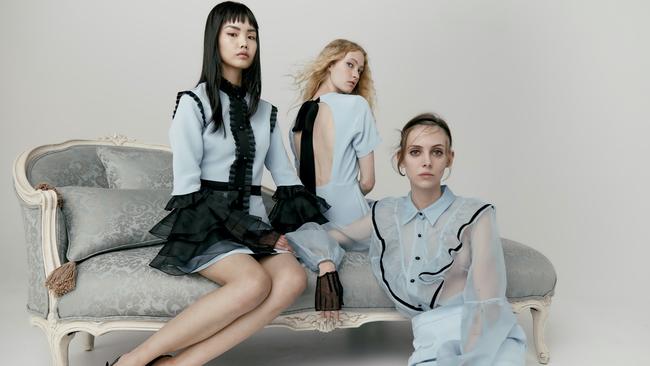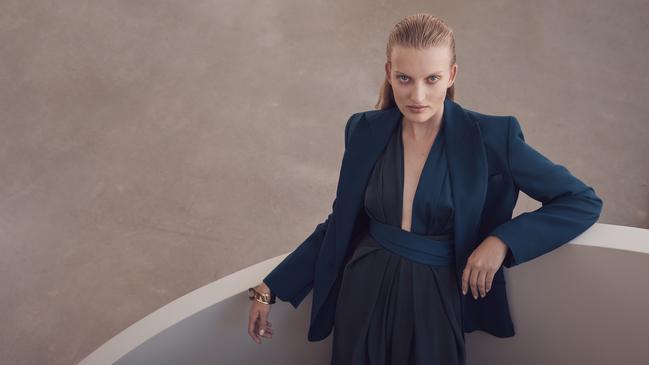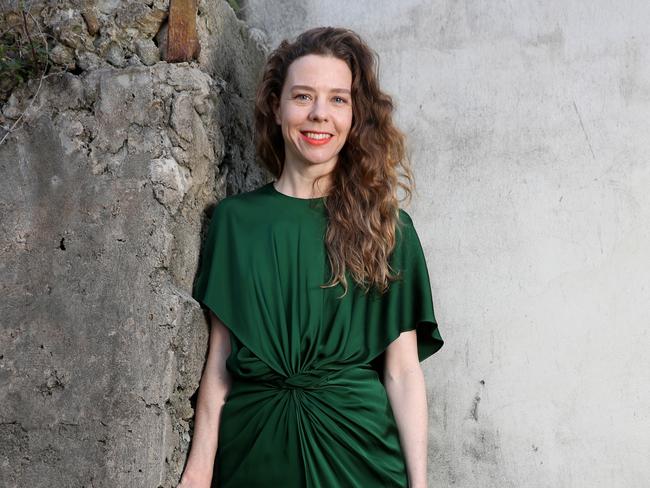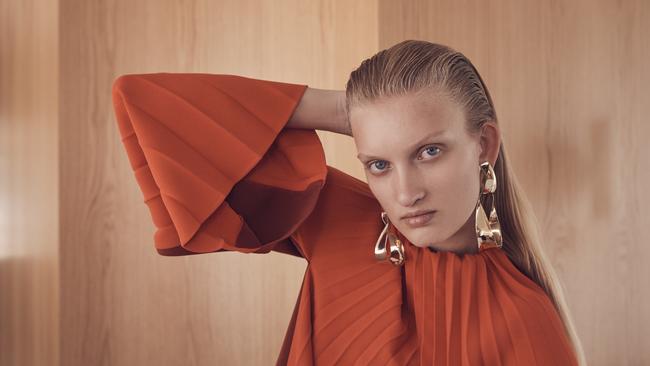Heavy discounting model is adding fuel to the COVID fire
As the pandemic-hit fashion industry searches for answers, clothing brands are looking outside the box to attract buyers.

Who doesn’t love a bargain? Why pay full price for something when you know that if you wait just a couple of months — or in recent times, it has been more like a couple of weeks — you can have the same item discounted by 20 per cent, 50 per cent or even 70 per cent off the original retail price?
And that’s before considering the radical sales taking place around big discounting “events” such as Black Friday, which have taken commerce by storm in recent years.
Well, while most consumers may like it, it’s not doing the broader fashion industry any good. It’s one part of a broken system that people have been pointing to for years without much traction. But as the COVID-19 crisis has crippled so many industries, so too the fashion industry is embarking on a strong period of self-reflection and internal analysis, trying to unravel the different strands that have brought it to the perilous position it is in today.

The Australian Fashion Council conducted a survey of more than 200 businesses at the beginning of the COVID-19 crisis that was published at the end of April.
It found that on average, even in the early stages of the pandemic, bricks-and-mortar sales were down 87 per cent — exacerbated by the number of store closures — and online sales were down 56 per cent.
In Australia alone, several brands and companies have gone into administration since March, including PAS Group (owner of Review, Yarra Trail and other brands), Tigerlily and retailer G-Star, while last week British brand Jigsaw closed its Australian division and stores.
In the US, popular sibling labels J. Crew and Madewell filed for bankruptcy last month, along with the Neiman Marcus Group and JC Penney. The latter are just two examples of the precarious situation already facing department stores globally that has only been compounded during this crisis.

In this publication, we have looked at the future of fashion from the perspective of fashion shows and their schedules, and, on the retail front, the realignment of clothes appearing in store in time for the correct season.
Inextricably tied to that second point on seasonality comes the discounting model. For years, clothes have arrived in shops months ahead of the season for which they are intended — cashmere coats in a Sydney summer? It’s just the ways things are. As a result, they go on sale well before they should, when the season is finally hitting. This not only slashes profits but also the perceived value of a brand — its equity.
Globally, there have been numerous initiatives examining ways to reimagine fashion since the pandemic and its ensuing lockdowns. The Business of Fashion, a London-based global trade media group, is facilitating Rewiring Fashion, forming proposals around three principles: the fashion calendar; the outmoded fashion show format; and the discounting model “that trains shoppers to expect perennial markdowns, eroding profitability and brand equity for everyone along the supply chain”.
Last month Belgian designer Dries Van Noten wrote an open letter to the industry, calling for changes to create a more sustainable fashion calendar, which includes seasonal realignment and less discounting. That letter now has more than 600 signatures from brands and retailers around the world.
As part of a Zoom gathering reported by Women’s Wear Daily when it launched, Van Noten said: “It is not normal to buy winter clothes in May (in the northern hemisphere). And it’s not respectful to the customer who buys at full price to see it marked down 50 per cent six weeks later. There are other ways to attract customers than giving discounts.”
The Council of Fashion Designers of America and the British Fashion Council have since issued a joint statement to their members along similar lines called The Fashion Industry’s Reset.
In Australia, a similar initiative is navigating the issues for our own industry. The Emergency Retail Group was set up as soon as the pandemic shutdowns began, spearheaded by Perth-based Richard Poulson, co-founder of Morrison and founder of Showroom X, an e-commerce platform of premium Australian retail brands for an international market.

The #WeWearAustralian campaign to support the local fashion industry also came from this group (and does include an element of discounting to boost sales during the downturn).
More than 200 brands and designers and the Australian Fashion Council are involved in the group and the campaign. The group has been having regular roundtable discussions to find broad industry solutions, including to the discounting model.
“We’re talking about a global reset of the fashion industry and the mentality of discounting,” Poulson tells The Australian.
“The luxury brands already operate that way and so I think that it’s more about following the major houses in their discounting strategies.”
Purely vertical brands, such as many of the luxury brands, aren’t beholden to retailers such as department stores and the big e-commerce players, which set their own discounting agenda. Some, such as Gucci, have a “no sales” policy, which is said to keep brand equity and desirability. It also leads to increased profitability. But that model is for a select few. For many brands, including most Australian brands, wholesale makes up a large portion of their total sales.
Follow the leader
Robyn Catinella, who runs a sales and public relations agency in Sydney, works with 17 local brands and has long supported a slower global system.
“No one will go through the COVID crisis without reassessing their personal consumption, and there will be an overhaul of the industry and it will be for the better,” she tells The Australian.
With regards to discounting by retailers, she believes relationships are key — and how brands first start working with retailers will set the agenda in future. “Different stores will have different terms” covering sell-through agreements and returns for each designer, Catinella says.
She says an agreement may state that a brand needs a 60 per cent sell-through and has 12 weeks at full price.
At the end of that period, they have a look at what styles haven’t sold, and the vendor can sell stock back to the designer or put it on sale; sometimes they go on sale sooner than agreed. Then it’s a race as to who goes on sale first and quit stock the fastest.
Once one major e-tailer or department store goes on sale, others are compelled to follow, as consumers won’t buy at full price from one retailer if another has the same item at a reduced price. It also means the designer is forced to reduce prices through their own platforms, so any profit margin is decimated. It’s not a sustainable business model but it has become the norm.
France has legislation on discounting, with only two sales periods permitted, in January and July. While many, including Poulson and Catinella, would welcome something similar in Australia, the chances of it happening are unlikely. Eva Galambos, owner of Sydney boutique and e-commerce business Parlour X, selling luxury brands, says legislation in Australia is “impossible”.
And so it comes back to those relationships between brand and retailer — but who holds the power? It’s interesting to note that one of the signatories to the Van Noten open letter is Bridget Veals, general manager womenswear for David Jones. With department store Myer, David Jones has come under fire for years from local designers for its in-season discounting model.
In a statement to The Australian, Veals says: “David Jones was happy to sign the open letter started by Dries Van Noten as it is an important initiative that will inform future thinking on change within the industry and is aligned to our principles.”
While most would see the power equation resting with the large global retailers, both department stores and e-commerce majors, such as Net-a-Porter and MatchesFashion, Galambos says the power lies with the brands.
“If the retailer is not agreeing to terms, brands have to choose to not stock with the retailer. It’s not easy to surrender power to a giant retailer and then take it back (at a later date). Brands and designers have a choice — short-term pain for long-term gain. Brands need to choose to lower their budgets and revenue expectations for more sustainable growth levels and greater control.”
Macgraw is a Sydney-based label by sisters Beth and Tessa MacGraw that is 50-50 wholesale and its own e-commerce business.
The MacGraws say even smaller players such as themselves can hold the power. They had made changes to their business structure in 2018 to have more control over seasons and delivery dates, and cutting the number of collections down to two a year. “We wanted to have some kind of power over our terms — when you drop product, when sales happen,” says Beth MacGraw. “The way you do that is by pulling out of certain stores — and you can if you don’t want them to sell for 60 per cent off. It’s not easy. But you have to ask — are they a good partner if they’re not working within your price structure?”

Bianca Spender is in the somewhat enviable position of being a purely vertical operation, holding all the power, with two stores and several concessions within David Jones that she operates. Last week she announced that she would not be discounting at present, as a statement against the discounting model, even as brands everywhere are on sale to get through the COVID-19 downturn.
“This is our moment to reset the clock, to reset the seasons and how we do business,” Spender says. “All our business models are absolutely being reconsidered. It has to be about producing less and producing carefully and not discounting highly. It’s about everyone buying a few investment pieces that last a length of time and work with your whole wardrobe so that you have solutions.”

True value
So, if you’re keeping items at full price for as long as possible, what will the consumer reaction be given they are used to sales?
First, says Catinella, it’s about educating customers as to the true value of items. “Creating brand equity is the bigger picture of brands not having to discount, an understanding of the work that has gone into something,” she says. “People don’t go into galleries expecting discounts. If the stories can be told and the designers can be a bit more transparent about how they go about their work... it’s about respecting the craft again.”
Poulson says there are other ways to add value for consumers. “I think there are a lot of other ways that you can reward your customers with benefits that don’t necessarily involve discounting, through rewards programs and special events,” he says. “It’s about quality over quantity. I know that there will always be the cheaper fast fashion but we have to realise that by discounting we are damaging our brands, and consumers need to buy less, perhaps, but buy more quality and support local.”
For Spender, part of her value-add proposition includes individual styling sessions with regular clients, so they can bring their existing pieces into store and work out what pieces from the new collection will work with what they already have. “We’re in a completely new world,” says Spender. “We’re not in our offices, there are no races, no large weddings, the way we approach fashion has completely shifted. My approach to that is to bring everyone closer.
“Putting something on sale for half-price won’t tell me what they need, it will only devalue what its true value is. I’m trying to get as close to the customer as I can, so we can rebuild the business together.”

To join the conversation, please log in. Don't have an account? Register
Join the conversation, you are commenting as Logout